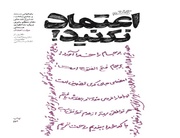Environmental preservation is today one of the greatest concerns of scientists in all scientific aspects. Given the direct effect of chemical industry on environment, chemists try to present new methods for the synthesis of materials with less chemical pollution but more biocompatibility.
According to Iran Nanotechnology Initiative Council (INIC), Iranian and Iraqi researchers studied the possibility of the application of herbal extracts to synthesize titanium dioxide nanoparticles. Results prove that the herbal extract enables production of nanoparticles at a higher rate and efficiency but less environmental pollution.
The aim of the research was to synthesize titanium dioxide nanoparticles in a simple, fast and cost effective manner with high efficiency in the presence of Euphorbia heteradena Jaub extract. This plant is found commonly in the western and central parts of Iran.
The nanoparticles also have application in the degradation of organic materials and water and wastewater purification due to their appropriate stability, non-toxicity and photocatalytic activity.
The method presented in this research is in agreement with global standards of green chemistry unlike other chemical methods. In fact, no toxic solvent or reactant (such as chemical reducers and stabilizers) has been used in this method. Elimination of by-products during the synthesis of nanoparticles and ease of production scaling up from laboratorial scale to industrial one are among the other advantages of the new method.
According to the researchers, instability of the synthetic nanoparticles is one of the challenges in previous studies. However, experiments suggest that no structural change is observed in the synthetized nanoparticles even after two months.
Results of the research have been published in Ceramics International, vol. 41, issue 10, Part B, 2015, pp. 14435-14439.
MS/PR

























Your Comment